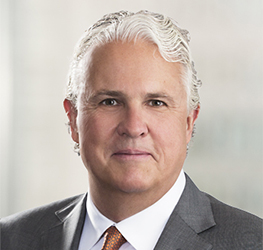
To help employers properly administer their 401(k) plans, in 2022, Foley & Lardner LLP is authoring a series of monthly “401(k) Compliance Check” newsletters. This article discusses the deadlines for plan sponsors to adopt required and discretionary amendments to their qualified retirement plans and some recent IRS guidance extending the deadlines for upcoming required amendments.
In July’s 401(k) Compliance Check, we looked at some of the policies or procedures that are important for proper 401(k) plan administration. This month we will take a look at the deadlines for a plan sponsor of an individually-designed 401(k) plan to adopt legally-required and discretionary 401(k) plan amendments, as well as recent IRS Notice 2022-33, which extended the deadline for certain legally-required 401(k) plan amendments related to the SECURE Act and the CARES Act.
Why is this Topic Important?
401(k) plans are required to maintain a written plan document that complies with the requirements of the Internal Revenue Code and ERISA. Failure to timely amend the written plan document for changes that are required under applicable law as well as for any discretionary design changes will affect the tax-qualified status of your 401(k) plan and may require you to utilize the IRS’ correction program (EPCRS) to address the failure. Plan sponsors should be aware of the timing requirements for 401(k) plan amendments and have processes in place to ensure that the 401(k) written plan document is properly maintained and timely amended to comply with law.
Basic Timing Rules for Legally Required Amendments
The IRS generally establishes a required deadline for any 401(k) plan amendments that must be adopted to reflect changes in the tax rules. Starting in 2016, the IRS began issuing a “requirement amendments list” each year, which lists the 401(k) plan amendments that must be adopted that year and establishes the deadline to adopt the amendment. Typically, that amendment deadline is the end of the second calendar year following the year the item is identified on the required amendments list. (This “remedial amendment period” allows the plan sponsor to permissibly amend the plan retroactively within that period to include the required amendment related to that applicable year.1) The current required amendments lists are located on the IRS website here and see our prior article for a more detailed discussion of how plan sponsors can utilize these lists to comply with these requirements.
In addition, the IRS updates annually (usually in the spring of each year) an “operational compliance list,” which identifies changes in qualification requirements that are effective during a calendar year (even if the written plan document is not required to be amended during that year to reflect the changes). This list (linked here) is meant to help 401(k) plans properly and timely administer their plan for legally required changes, even if the plan document has not yet been amended to reflect the legally required changes.
Basic Timing Rules for Discretionary Amendments
While a 401(k) plan document must be updated for legally required changes, plan sponsors have many opportunities to make discretionary design decisions (and changes) to their plans (e.g., eligibility rules, available contribution types, contribution formulas, in-service distribution options, etc.). When a 401(k) plan makes a design change to the plan that is generally referred to as a “discretionary” amendment to the plan. For example, a 401(k) plan sponsor can make design decisions to start allowing plan loans or in-service hardship withdrawals, or include a new class of employees to participate in the plan. The general rule for these types of discretionary design changes is that the written 401(k) plan document must be amended by the end of the plan year in which the design change becomes effective. (So, for a calendar year plan, by December 31 of the year in which the plan begins administering the design change.)
Plan sponsors should work with their plan administrators to ensure that prior to the end of each plan year the written plan document is amended to reflect discretionary changes to the plan’s operations that went into effect that year.
IRS NOTICE 2022-33: Extension of Certain Plan Amendment Deadlines for SECURE Act and CARES Act Changes
The IRS recently released guidance giving plan sponsors more time to adopt some, but not all, of the 401(k) plan amendments that are needed to reflect law changes under the Setting Every Community Up for Retirement Enhancement Act of 2019 (the SECURE Act) and the Coronavirus Aid, Relief, and Economic Security Act (the CARES Act). These law changes and the updated guidance from the IRS are described in more detail below.
SECURE Act
Under the SECURE Act, a 401(k) plan could increase the required beginning date for required minimum distributions from April 1 following the calendar year in which a participant attains age 70½ to April 1 following the calendar year in which a participant attains age 72. This permissible amendment may only be applied to participants born after June 30, 1949.
The SECURE Act required plans to be amended to make this change by the end of the 2022 plan year or such later date as the United States Department of Treasury prescribed.
CARES Act
The Coronavirus Aid, Relief, and Economic Security Act (the CARES Act) permits 401(k) plan sponsors to adopt any or all of the following provisions (and the original deadline to adopt the related plan amendments was December 31, 2022):
- Suspension of 2020 Required Minimum Distributions: Plan sponsors were permitted to waive required minimum distributions that would have been due in 2020 for an additional year.
- Coronavirus-Related Special Distributions: Plan sponsors were permitted to allow qualified individuals (as defined by the CARES Act) to elect to receive coronavirus-related distributions of up to $100,000 in 2020 and waive the 10% early withdrawal tax penalty and the 20% mandatory federal income tax withholding that would have otherwise applied to the distribution. Repayment of these special distributions by the participant to the plan generally must be permitted during the three-year period following the distribution.
- Increased Limits on Plan Loans and Extended Loan Repayment Period: For 401(k) plans that allow plan loans, plan sponsors were permitted to increase the limit on participant loans granted to qualified individuals (as defined by the CARES Act) between March 27, 2020 and September 22, 2020 to the lesser of $100,000 or 100% of the participant’s vested account balance in the plan. Additionally, for any loan repayments due between March 27, 2020 and December 31, 2020, plan sponsors were permitted to extend the loan repayment date for up to one year.
IRS Notice 2022-33
IRS Notice 2022-33 provides extensions for the legally-required amendments implementing the above described provisions of the SECURE Act and the CARES Act provision related to the waiver of 2020 required minimum distributions to December 31, 2025. The deadline to amend 401(k) plans for the CARES Act optional provisions related to special coronavirus-related distributions, and increased loan limits and the extended repayment period has not been extended – that deadline continues to be December 31, 2022. The Notice also extends anti-cutback relief to amendments made before these deadlines. In all cases, the 401(k) plan must be operated as if the amendment applied as of its original effective date.
1 For example, in IRS Notice 2020-83 (issued on 11/20/2020) the IRS listed the required amendments for 2020 and gave plan sponsors until December 31, 2022 to adopt them. During this remedial amendment period, the plan still had to be operated in compliance with the required provision. In most instances, these changes are fairly technical and have little bearing on how benefits are calculated for any particular participant.
 |
As part of Foley’s ongoing commitment to provide legal insight to our clients and colleagues, our Employee Benefits and Executive Compensation Group has a monthly newsletter we call “Employee Benefits Insights,” where we provide you with updates on the most recent and pressing matters concerning employee benefits and other related topics. Click here or click the button to the left to subscribe. |

